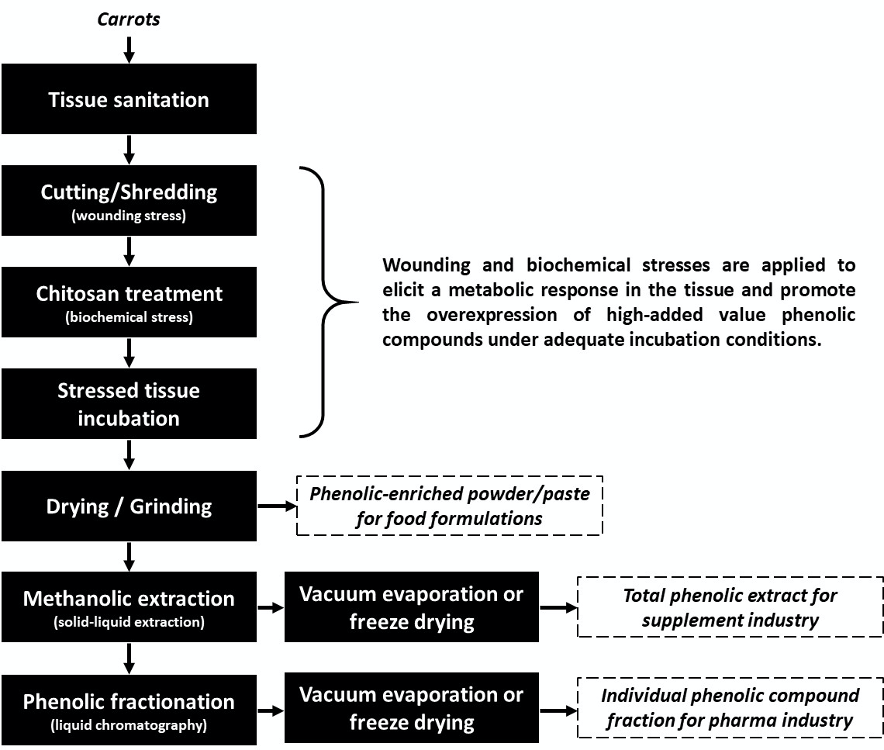 |
|
In the present study, the postharvest application of wounding stress applied alone and combined with chitosan was evaluated as an innovative tool to increase the concentration of antioxidant phenolic compounds in carrots. Carrots were wounded to obtain pie-cuts and shreds. The whole and wounded tissue (300 g) was sprayed with a chitosan suspension (0.5% w/v), and the content of individual phenolics were evaluated before and after 48 h of storage at 20 °C. When the two stresses were combined (wounding+chitosan) a synergistic effect on the accumulation of phenolic compounds were obtained. For instance, after storage chlorogenic acid and p-coumaric acid derivative increased by 5,069.1% and 385%, respectively, in chitosan treated carrot shreds. Similarly, isocoumarin, which was not detected in carrots before storage, showed a high accumulation after storage in chitosan treated carrot shreds (1,074.8 mg/kg). Results presented herein demonstrated that the combination of wounding stress and chitosan can be used as an effective strategy to increase the content of antioxidant phenolic compounds in carrots. The stressed carrot tissue can be used as raw material to obtain value-added food products or for the extraction and purification of phenolics with application in the food and dietary supplement industries.
Keywords: Chitosan, wounding stress, plants as biofactories, phenolic antioxidants, chlorogenic acid.
|
|
 |

